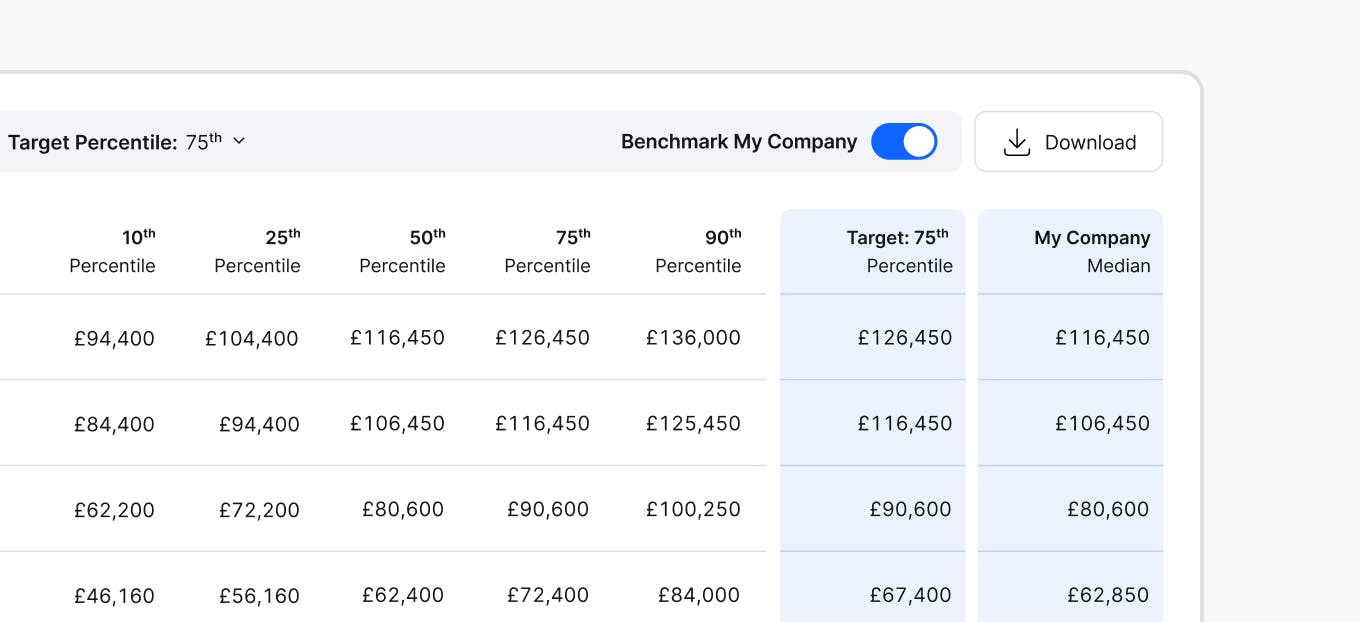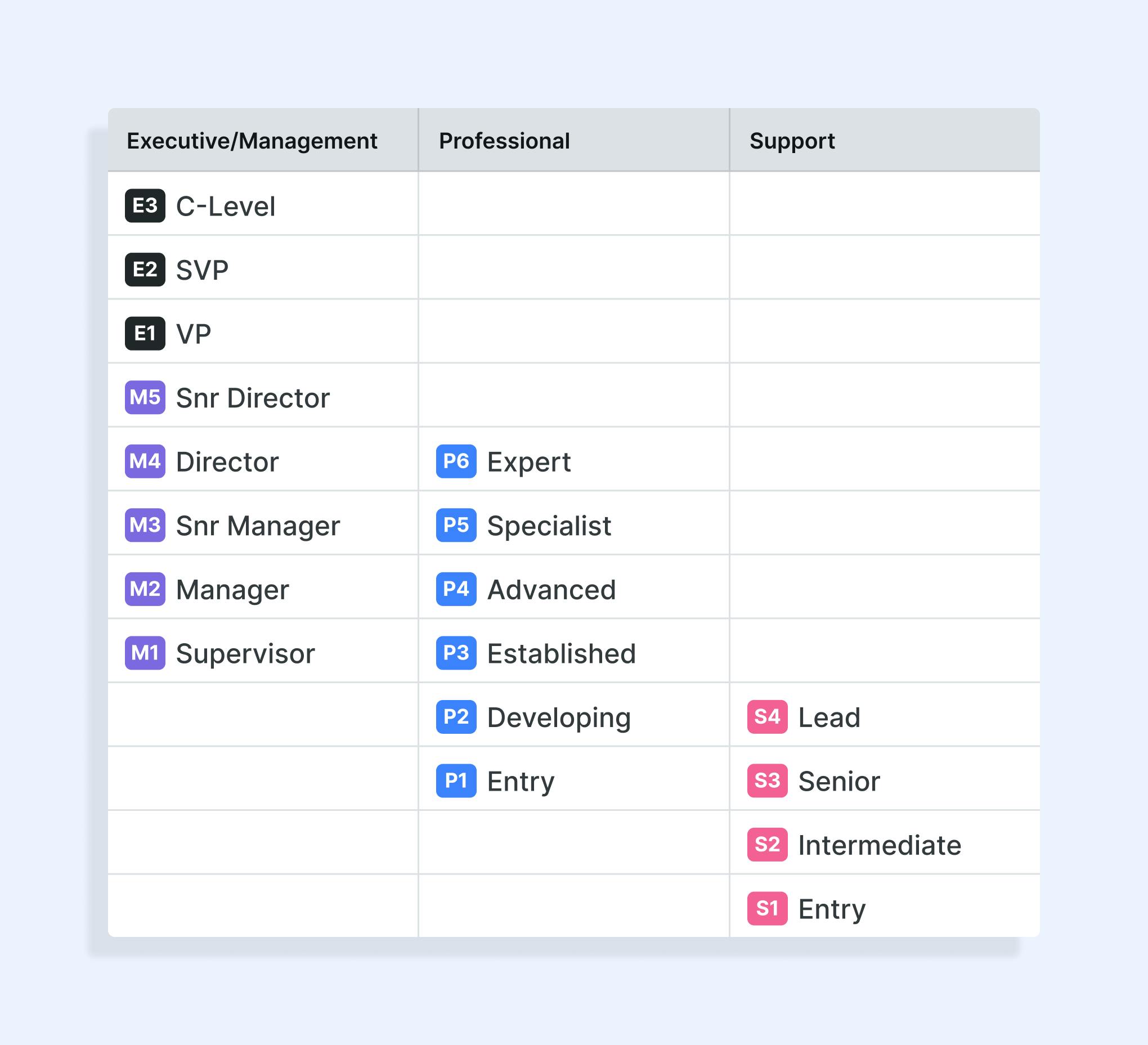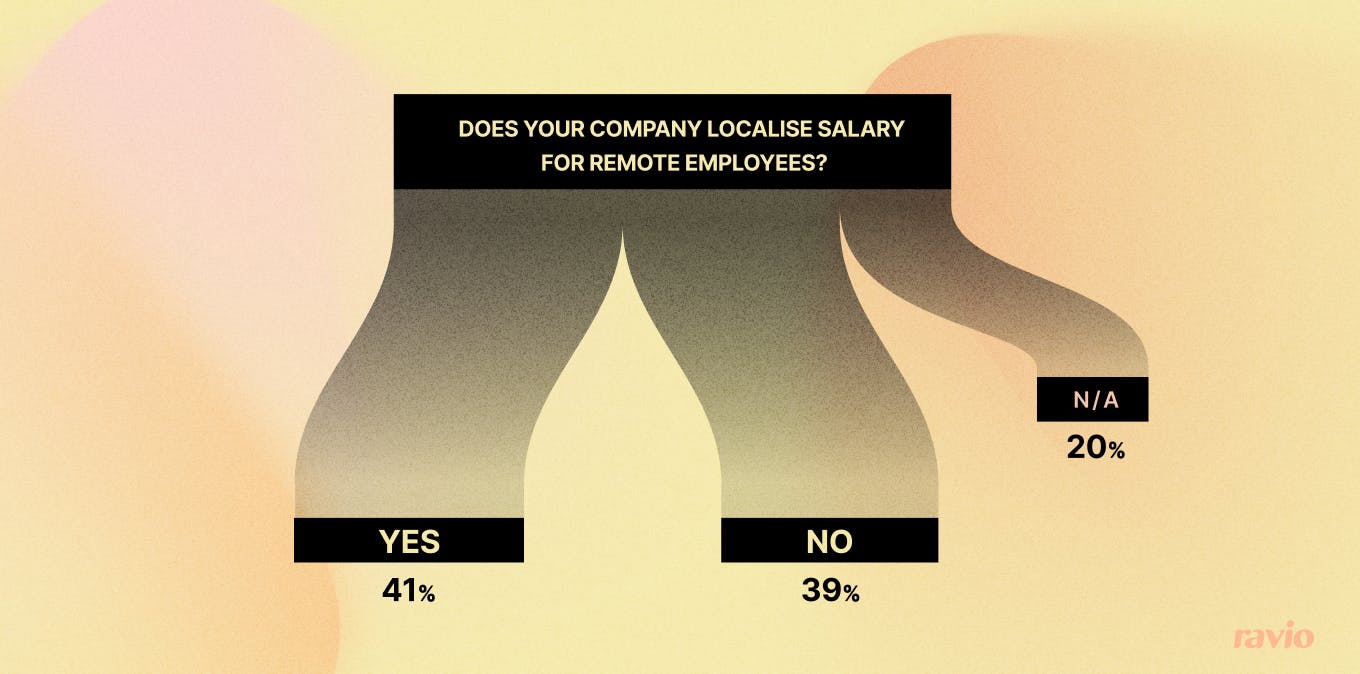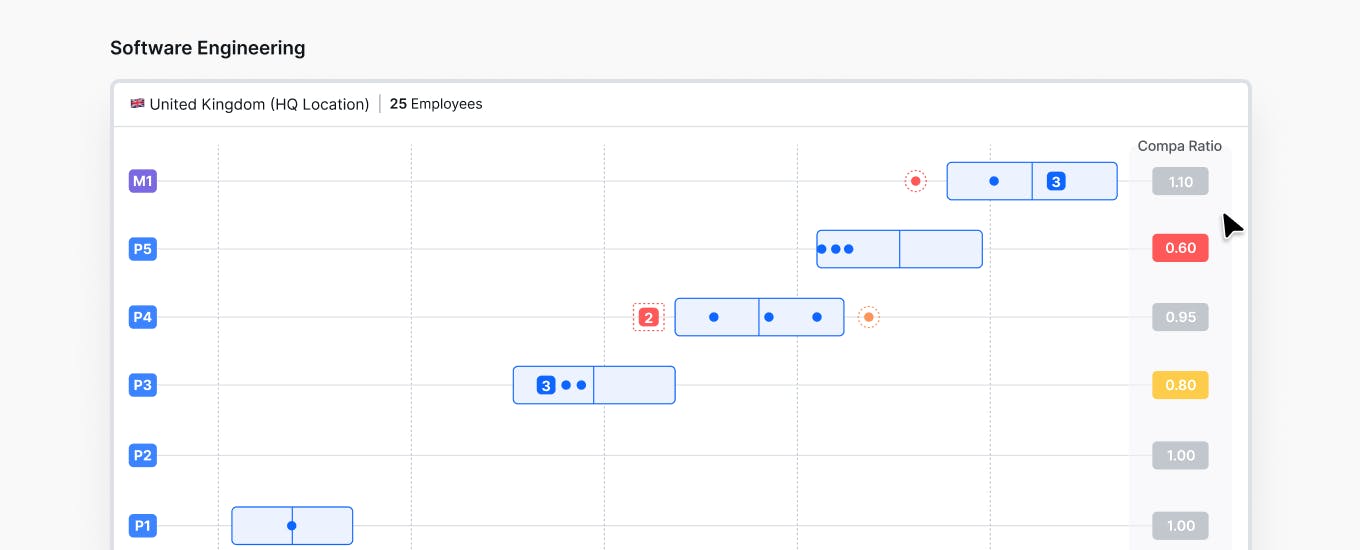What to include in a best practice compensation framework

Done right, a compensation framework ensures decisions are made logically and without bias, meaning employees feel fairly rewarded and motivated to contribute to business success.
Done wrong, it can feel like there’s little logic behind the compensation decisions being made – which could have a big impact on employee engagement and retention, given we know that compensation is a major factor in both employee retention and attrition (McKinsey, 2022).
So no wonder it feels high stakes to get right.
There’s also a lot of competing advice out there on what a compensation framework should include. Much of which has the general message that ‘it varies depending on your company’.
That’s true in some ways: there’s always subjectivity in how a company does compensation.
But, there are also five core components that any best practice compensation framework needs to include – and that actually makes for a pretty simple step-by-step structure to develop.
What is a compensation framework?
First things first, let’s define what we mean by ‘compensation framework’ – because different companies use different terms in different ways.
A compensation framework is a formalised structure used to design, implement, and manage a company’s approach to compensating their employees – also known as a compensation structure or compensation strategy.
It’s important because it provides a strategic view of how compensation aligns with company values and business objectives, which ensures informed, consistent, and fair compensation decisions and enables you to scale your team efficiently and fairly as the company grows.
In turn, this makes communicating those decisions to employees (and prospective new employees) easier because there’s clear rationale in place – preventing issues later down the line with employees feeling unfairly paid.
Stay in the loop with the latest news, trends and insights from Ravio
What’s included in a best practice compensation framework?
A compensation framework should include five core components, as follows:
- Compensation philosophy
- Job framework
- Level framework
- Location framework
- Salary bands
All of these components are interconnected, and combined they make up the overall approach to compensation – ensuring compensation decisions are made fairly and equitably.

Let’s take a closer look at what each of these components includes.
Compensation philosophy
A compensation philosophy is a set of guiding principles for a company’s unique approach to compensation.
The compensation philosophy ensures that the compensation framework is always aligned with the company’s values, mission, and business objectives – so it’s usually a very custom piece in the specific language of the organisation.
Typically it includes how competitive the company’s compensation aims to be compared to the wider market, which is often articulated as a target percentile. For instance, the compensation philosophy might dictate that the company always targets offers at the 75th percentile to attract top tech talent, due to a business objective to accelerate business growth.

Salary benchmarking across different target percentiles, shown within the Ravio platform.
As well as salary competitiveness, the compensation philosophy will also include decisions on total compensation, such as:
- Will employees be granted equity in the company? If so, will this apply for all employees? And what will the balance of cash vs equity be?
- Will variable compensation be included in total compensation? If so, will this apply for all employees? And what kind of model will be used?
- What benefits are important to emphasise alongside compensation?
And, the compensation philosophy typically also lays out the company’s view on key concepts such as pay transparency and pay equity – setting the tone for future compensation decisions.
Job framework
Also referred to as ‘job architecture’, this is the structure and rationale for how individual job positions work within a company, and how they fit into overarching departments or functions.
In terms of best practice, the job framework defines:
- Job families: (also called departments, functions) e.g. engineering, commercial, operations – which should reflect the organisation structure
- Job titles: a consistent approach to job titles, which should ideally include the job position and level e.g. Junior Frontend Software Engineer or Head of Engineering – and sometimes also includes location
- Responsibilities: clearly defined for each role to give employees ownership over their work recruiters and help hiring managers find best fit candidates – this should also tie to the company’s Progression Framework to ensure career progression routes are clear and visible.
Level framework
A level framework is the hierarchy of job positions within an organisation.
Different companies create their level framework in different ways, but a typical structure includes four career tracks:
- Executive: leadership roles overseeing core functions
- Manager: oversees a team, with success measured based on the team’s output and impact on the business
- Professional: success is measured based on individual output and impact on the business
- Support: offer support to professional or manager roles, or complete manual and task-driven work.
Each of these career tracks contains a hierarchy of levels. The levels are defined by expectations such as the level of responsibility, business impact, autonomy, skills and competencies needed, and so on – which may vary across different job families.
For instance, this is an overview of the career tracks and levels within Ravio’s own level framework:

Ravio's level framework
The level structure is fundamental to career progression – outlining the responsibilities, experience, impact etc that an employee needs to demonstrate to progress to the next level in their career track – and so goes hand-in-hand with a company’s progression framework.
Location framework
The location framework defines if and how compensation is localised across different working locations – both for:
- Employees based at different office locations
- Remote employees
Ravio’s data (as of August 2023) shows that location is already an important factor in compensation – with 41% of companies localising salary for remote employees.

Any company that already has employees across different geographies or that is planning to build a global workforce in the future should have a location framework in place to ensure clear, consistent, and fair decision-making about compensation for all employees across all locations.
Plus, with compensation typically the biggest expense in a company budget, controlling for geographical differences is important for the business too.
There are many different ways to implement location-based pay – from fully bespoke salaries to a tiered system – depending on what makes sense for the locations that you operate within.
Salary bands
Salary bands are how every other component of the compensation framework is put to work in practice.
They give a defined salary range for groups of employees that perform equal work (or work of equal value), which means that each salary band is defined based on three factors:
- Job position – as determined by the job framework
- Level – as determined by the level framework
- Employee location – as determined by the location framework.
And the range of the band is then determined by:
- Midpoint – the ‘target’ salary, based on the target percentile which is defined as part of the compensation philosophy e.g. for a P3 Software Engineer based in the UK at the 75th percentile the midpoint of the band would be £70,600 (Ravio data, August 2023).
- Range (min to max salary) – based on the expected time to promotion which is defined as part of the level framework.
Through salary bands, each component of the compensation framework is interconnected, which means that if you want to make changes to your salary bands, you first need to go back to the overall compensation framework and make changes to each underlying component.
It’s worth noting this salary band structure is purely focused on base salary. For some companies variable pay is a major factor, especially if there’s a culture of ‘pay for performance’ – so it might be important to layer variable pay on top of salary bands to get a full view of compensation.

Software engineering salary bands, shown within the Ravio platform.
Combined, these five core components – compensation philosophy, job framework, level framework, location framework, salary bands – make up the overall compensation framework.
Going through the process of developing and getting stakeholder alignment on each component, and the overall compensation framework, makes those day-to-day compensation decisions way simpler for people teams to navigate.
For employees, having these things in place means that compensation is managed in a well-reasoned, fair, and equitable way.
Plus, it enables greater transparency and better communication about compensation with employees too – because everyone’s on the same, clearly defined page.